The “Story Cube” game is a fun and creative activity that involves storytelling using characters, objects or scenes drawn on cardstock cubes. Players take turns tossing the cube in the air, like rolling dice, and begin to tell a story based on the image that lands face up. Each new roll of the cube can potentially change the direction of the narrative, incorporating subsequent images. This game allows for the development of imagination and creativity for each player as they contribute to the story.
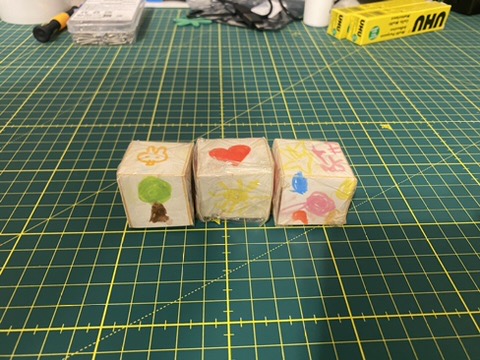
Making the Story Cube
Now, let me explain how to create a 1.18 inches x 1.18 inches (3 cm x 3 cm) cube out of cardstock for the “Story Cube” game. This simple process will enhance your children’s fine motor skills and teach them how to create their own game materials.
Materials List:
For the “Story Cube” game, the materials listed below will assist you and make your game even more fun.
- Cardstock: You need a flat and clean piece of cardstock to make the cube. Medium-thickness, easy-to-cut cardstock is preferred.
- Ruler: To draw equally-sized squares (e.g., 1.18 inches x 1.18 inches) on the cardstock, use a ruler.
- Pencil: You will need a pencil to draw the squares and decorate the story cube. Use a regular pencil, a ballpoint pen, or colored pencils.
- Scissors: Use sharp, safety-conscious scissors to cut the cardstock and shape the story cube.
- Adhesive Tape or Glue: Use adhesive tape or glue to join the squares together to form the story cube.
- Colored Papers or Stickers (optional): To decorate the story cube and add pictures, characters, or symbols, use colored papers or stickers.
- Paint and Brush (optional): If you want to paint and decorate the cube with your children, use water-based or child-safe paints and brushes.
Prepare the cube:
First, choose a clean and flat piece of cardstock. The thickness is up to your preference; however, a medium-thickness cardstock will better maintain the shape of the cube during the game.
Using a ruler and pencil, draw a 1.18 inches x 1.18 inches square on the cardstock. This will be one face of our cube.
Proceed to draw a total of six squares, connected to each side of the initial square. This will create the necessary faces for our cube. Hint: To simplify the process, first draw a 3.54 inches (9 cm) square or rectangle and subsequently divide it into smaller squares.
After drawing the squares, use sharp scissors to carefully cut them out. If you want your children to help, supervise them closely.
Once all the squares have been cut, attach them to one another using adhesive tape or glue to form the cube. Make sure the edges are joined neatly and securely.
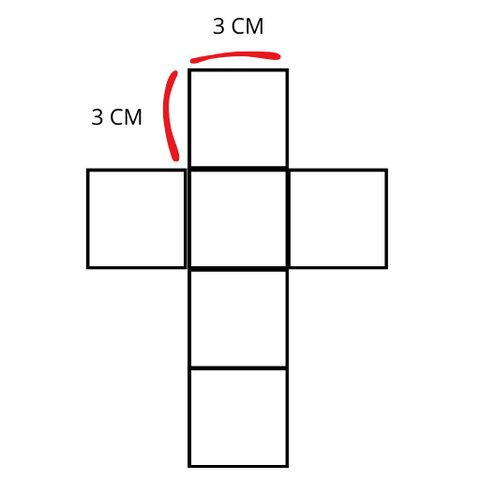

Decorate the cube with shapes and images
Finally, to enhance your gameplay and spark your children’s imagination, add pictures, characters, or symbols to the cube with drawings or small stickers. This step increases the game’s creativity and entertainment factor, as the images on the cube will form the basis of the story, activating the players’ imagination. Follow these tips to apply this step effectively:
- Variety: Decorate the cube with various types of images, characters, and symbols, or use stickers to make the stories more colorful and engaging. For example, focus on providing a variety of categories such as animals, objects, nature, seasonal elements, fantastic creatures, human figures, and emoticons.
- Simplicity: Keep the images and stickers simple and clear, so they can be easily understood and recognized by your children. Complex or detailed visuals can make storytelling difficult and impede your children’s focus.
- Narrative foundation: Images and symbols drawn on the cube should contribute to the basic structure and progression of the story, so your children can develop better narratives. Ensure that the pictures not only entertain, but also contribute to the story’s development and delivery.
- Educational value: If your goal is to tell your children stories with educational value, select appropriate images and symbols for that purpose. For example, if you want to discuss topics such as environmental protection or history, use related elements to decorate the cube.
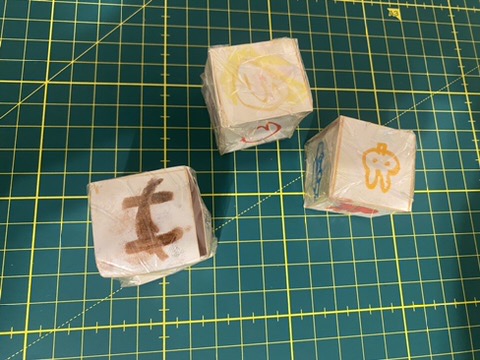
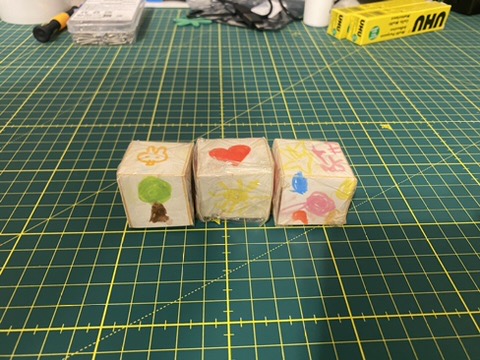
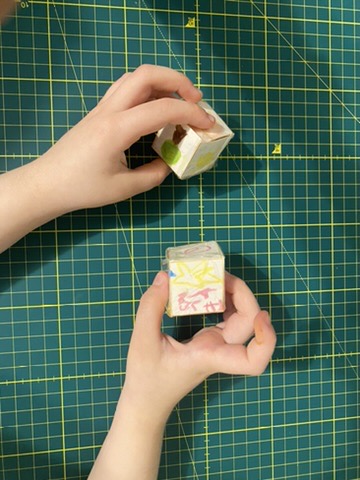
How to play the Story Cube game:
The “Story Cube” game provides a fun and dynamic environment to enhance the imagination and creativity of your children through chance-based storytelling. Follow these step-by-step instructions to play the game:
First, gather your players and take the story cube you prepared earlier with the drawings or stickers of characters, scenes, or objects.
Arrange the players in a storytelling sequence, ensuring that everyone has a fair chance. In this step, decide the order of storytelling.
Start the game by having the first player toss the story cube in the air, similar to rolling dice. The spinning cube displays the images and characters that determine the story’s direction.
When the cube lands, the player focuses on the image on top and begins the story based on that picture. It’s essential that the image helps the children’s imagination transform into a coherent and engaging story.
After the first player starts the story and proceeds for a while, transition to the next player. By rerolling the cube, the next player selects a new image and continues the story from the point the previous player stopped, incorporating the new image.
Players take turns storytelling, gradually crafting an increasingly complex and exciting story. At the same time, this activity teaches children social skills like using pictures to generate new ideas, listening to other players’ story segments, and respecting their opinions.
The game concludes when the story comes to a natural close or when a predetermined time or round limit is reached. Afterward, the players evaluate the story created and share their ideas for future gameplay, ensuring the sustainability and diversity of the game.
The key to playing the “Story Cube” game is to allow each player to contribute to the story’s progression and enrichment using their imagination and creativity. By doing so, you will experience a delightful, educational, and unforgettable game that creates lasting memories. Enjoy the game!


